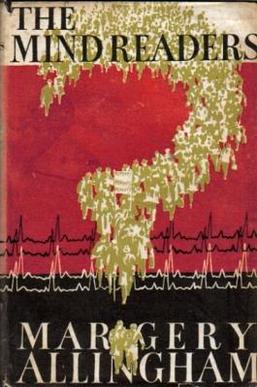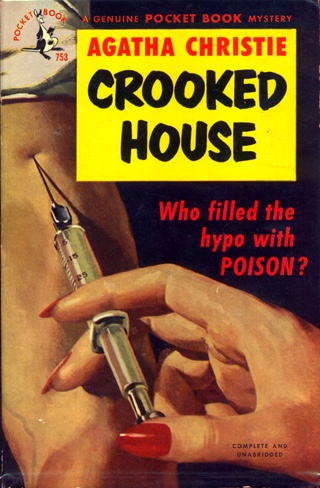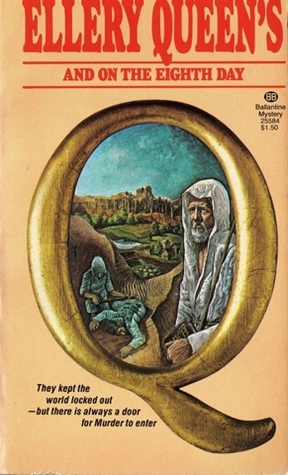
In January, I picked up Josephine Tey’s The Daughter of Time. I was in the mood for a mystery, and this is reputedly a great one. It’s a witty, compulsively readable, entertaining book, and it managed to convince me that Josephine Tey was Completely Wrong.
The author of a detective story is usually the ultimate authority on who killed who, she being the one who shoved killer and victim together and said “Let’s you and him fight.” However, The Daughter of Time is the one where Tey’s detective, Alan Grant, livens up a hospital stay by “investigating” the murder of the 12-year-old King Edward V and his brother in 1483, accepted by most historians as having been ordered by Richard III. On that last point, Josephine Tey chooses to dissent.
Some Wikipedia-style canned context might be useful. Edward IV died in April of 1483. The heir to the throne was Edward V, then 12. Even 15th-century monarchists weren’t dumb enough to hand absolute power over to a 12-year-old, so England needed a regent.
Edward IV had intended his brother Richard for the role, but there was a problem. Three years into his reign, Edward revealed that–surprise!–he’d secretly married a woman named Elizabeth Woodville. Not everybody was happy about this. For one thing, Edward’s supporters had planned to ally with France by marrying him off to a French princess, and the sudden appearance of Elizabeth sunk the whole deal. The bigger problem was that, although Elizabeth was the daughter of an earl, she was still technically a commoner. The Woodvilles were now dramatically upwardly mobile, and some of the existing nobility thought of them the way David Broder thought of Bill Clinton: they came in and trashed the place, and it wasn’t their place. Apparently one of the people who thought this way was Richard.
With Edward V raised by and surrounded by Woodvilles, Richard’s chances of hanging on to the role of Lord Protector were not great. Also, to be fair, the more power the Woodvilles had the less safe he probably felt, this being an era when political blunders didn’t just put you in danger of spending more time with your family. So as Edward V and his brother–also Richard, because like most royal families the Yorks were very bad at thinking up names–were on their way to London for the coronation Richard intercepted them, arrested their Woodville escorts, and installed them in the Tower of London (which at the time was a palace rather than a prison).
In June, Richard announced that Edward IV liked secret marriages so much that he’d had another one a few years before marrying Elizabeth Woodville, rendering that marriage invalid and the princes illegitimate. Next in line to the throne was–gosh fellas, what a coincidence–Richard III.
As summer wore on into fall, it began to occur to people that it had been a while since anyone had seen the princes.
So. I should say first that I was open to The Daughter of Time’s argument, mostly because I’m not big on monarchy. I’m okay with True Kings as long as they’re safely trapped in the pages of Big Fat Fantasy novels, but I’d prefer they stay out of the real world, thanks. As far as I’m concerned, the whole “hereditary absolute ruler” deal taints everyone it touches. I have no emotional attachment to either side of the was-Richard-a-killer argument because a “no” answer doesn’t stop me filing Richard under “villain.” But the further I got into The Daughter of Time, the more I wanted to argue with it. Something about it was… well, almost creepy. And, I eventually realized, familiar.
Last year I read James Shapiro’s Contested Will, a history of the belief that Shakespeare’s plays weren’t written by Shakespeare (or, as the anti-Shakespeare partisans like to call him, the “Stratford Man”). Shapiro grounds the most common arguments, and the shift in favorite secret identity from Francis Bacon to the Earl of Oxford, in their historical context. The anti-Stratfordians’ arguments are, it turns out, very much of their times, and changed with the literary fashions, but a certain style of argument–for the purposes of this essay it needs a name, so I’ll call it “Heroic Contrarianism”–recurs throughout Shapiro’s survey, as it does when I see an Oxfordian in the wild. Or a creationist. Or a climate change skeptic.
And here was the same Heroic Contrarianism, in a different context, in The Daughter of Time. It took me over a week to get through this slim novel because I ended up reading two conventional popular histories at the same time, as an antidote.
What reminded me of the Oxfordians was Josephine Tey’s implacable, unshakeable faith in her own Rightness. By this I don’t just mean that she thought she was right. Most of us do, most of the time. Capital-R Rightness is to ordinary conviction as triple espresso is to chamomile. The Daughter of Time is Right like a concrete bunker impervious to logic, rhetoric, or fact. The fact that, by backing Richard III, Tey is rejecting the judgement of legions of professional historians inspires not an instant of self-doubt. In fact, it’s crucial. Bucking conventional wisdom is a fundamental characteristic of Heroic Contrarianism, and what makes it invulnerable. Tey is bravely right. It’s not just a belief, it’s a moral conviction: being a truth-teller feels righteous… and maybe a little romantic, like she’s set herself apart from the sheeple. Which is what makes this kind of argument so infuriating: you can’t miss the implication that the sheeple is you.
The Daughter of Time is a book-length argument, but this argument doesn’t exist to convince anyone else. It exists to protect the author’s own convictions. The Daughter of Time isn’t defending the truth. It’s defending the feeling that the author is one of the few enlightened forward-thinking souls who can see the truth.
Presented with a fact, we all look for a way to fit it into our existing assumptions. Ideally, if the new fact doesn’t fit what we think we know, and we can’t find a reason to believe it isn’t actually a fact, then at some point, to some extent, however reluctantly, we modify our assumptions. “Reluctantly” is usually the operative word–even reasonable people don’t like changing their minds–but for a Heroic Contrarian like Alan Grant, there’s no give and take at all. Grant never integrates new information into his theory–he integrates his theory into the new information. Every fact is interpreted in the light of Grant’s preconceptions. The jigsaw puzzle must show the picture Grant has in mind, even if Grant has to mash the pieces together to make them fit. Sometimes this is easier when Grant lets the less-convenient pieces fall beneath the table.
Alan Grant snags a research assistant to do the legwork and starts digging into the evidence–or at least what evidence he can find, and find satisfying. Many of his conversations with his assistant run along these lines:
“Wait a minute–I’ve discovered a new fact that appears to throw our entire theory into doubt!”
“Ah, but this explains it.”
“This” being a massive assumption. As soon as the assumption stands on its own, however shakily, Grant finds a reason to stop looking.
Grant’s theory depends partly on the notion that no one during Richard’s lifetime believed that anything had happened to the princes at all. When he discovers that in 1483 rumors were already circulating that the princes were dead, Grant is put out. For a few minutes. He immediately argues himself into believing the rumors never spread beyond a couple of isolated areas where Richard’s enemies were strongest. This isn’t true: even before the murders, rumors that the princes were dead, or in mortal danger, spread all over London. Four men were executed for concocting a harebrained scheme to rescue the princes by setting fires around the city as a distraction. (This account, from a Tudor partisan, is the only one I could find on the internet.) Grant could have argued that the fact that the rumors existed, and travelled widely, doesn’t mean they were true. Instead he simply denies that the rumors were widespread, and moves on to something else.
“Something else” almost always begins with an incredulous tirade on the stupidity of historians. How can they be so gullible as to believe that Richard arranged those murders? After Grant repeats the point a few times it begins to sound like he isn’t criticizing the historians so much as congratulating himself. Alan Grant is a policeman. The historians he’s reading are respected professionals with degrees and weighty academic reputations. How can they not see what Grant sees?
The Heroic Contrarian would suggest that it’s because they’re professionals. One of the oddest received ideas in our culture is the notion that wisdom can be found in ignorance. We look down on eggheads. In our movies and on TV, the intellectual’s book-learning fails while the hero’s street smarts and the innocent’s naivete win out. Ignorance is purer than knowledge; education is treated as though it’s some kind of grit gumming up the workings of scholarly brains.
This is the perfect narrative for Heroic Contrarians. Biologists are hidebound. Shakespearian scholars are mired in orthodoxy. Complacent historians chant a litany of rote-memorized Tudor propaganda without understanding what any of it means. The Heroic Contrarian, as an ignorant outsider, comes to the problem with no preconceptions, and his day job gives him special insights denied to the professionals. It is thus that he sees the truth. Surprisingly often, the Heroic Contrarian is an engineer. Alan Grant is a policeman. What Grant believes his police experience gives him, and what he believes the historians lack, is insight into human behavior.

Grant’s ideas about criminal psychology are black-and-white. Richard III’s policies in office were, in Grant’s opinion, admirable. It is inconceivable to Grant that Richard could have been both a good administrator and a ruthless killer. When Grant learns that Richard, prior to the “Edward V is a bastard” gambit, floated the idea that it was his own brother Edward IV who was illegitimate, Grant simply refuses to believe it. He has no evidence against it. Richard was simply too nice to do that to his own mother. As a murder suspect Grant prefers Henry VII, a master of “sharp practice” whose reign brought heavy taxes and the Star Chamber.
Grant also thinks it’s significant that Elizabeth Woodville came out of sanctuary and brought her daughters to court in the spring of 1484. That must mean the princes were still alive! Who could believe, asks Grant, that a bereaved mother would reconcile with the man who murdered her sons? Those historians! So crazy!
Grant doesn’t consider that historians might also have special knowledge that he doesn’t. They may know facts his amateur research didn’t uncover: for instance, it’s notable that, before she agreed to leave sanctuary, Elizabeth insisted that Richard publicly swear a detailed oath to ensure her daughters’ safety. Beyond that, historians have context. Alan Grant judges Elizabeth’s actions by the standards of a 1950s middle-class country house inhabitant, and in those terms her behavior doesn’t make sense–but Elizabeth made her decisions in 1484, in a completely different culture and environment. She was an ex-queen, out of favor in a time and place when being out of favor was genuinely dangerous. Keep in mind that there was no police inspector handy to investigate her sons’ murder. Assume that her first priority was to safeguard the lives of her remaining children, and preserve for them whatever status and access to power she could. In that case, making nice with Richard might actually have been the pragmatic choice. But to think of that, Grant would have to be able to think his way into another time–to think less like a policeman and more like a historian.
Not that there aren’t legitimate historians who believe Richard III was innocent. The biggest difference between the Oxfordians and the Ricardians is that there’s some actual non-insane controversy about Richard III. But legitimate historians don’t argue like Alan Grant. They’re not even starting from the same point. The clue that starts Grant’s investigation is the flimsiest thing in The Daughter of Time–so silly my willingness to entertain its argument took a hit before it began, and never recovered. I have no idea how Josephine Tey herself came to believe Richard III didn’t have the princes killed. Grant believes it because he can pick criminals out by their faces. That seems like an inconveniently plot-short-circuiting skill for a detective-novel hero, but never mind: Grant sees a portrait of Richard and thinks Richard just doesn’t look like a killer. Before he realizes it’s Richard, Grant thinks it looks like the portrait of a judge. By contrast, once Grant settles on Henry VII as prime suspect Grant can’t help remarking on his thinning hair and bad teeth.
Most Heroic Contrarianism starts from apparently common-sensical but entirely wrong assumptions about how the world is supposed to work. To a creationist, it feels right that the Earth always existed as it has now. To an Oxfordian, it feels right that Shakespeare’s great plays were written by a noble spirit, not a money-grubbing tradesman. If some common actor and part-time malt-speculator could write a transcendent work like King Lear… well, something would be wrong with the world. To Grant it feels right that criminals have a certain look. It feels right that criminals have certain features, behaviors, and attitudes that don’t match the image of Richard that Grant formed from an idealized portrait painted a century after the man’s death. Grant catches a glimpse of Richard III that doesn’t match his prejudices, and spends the rest of The Daughter of Time reassuring himself that he lives in a world where a criminal has a certain kind of face.
But what kind of world is that? Shortly after I read The Daughter of Time, I read something else that clarified the problem: fantasy writer Theodora Goss posted a short essay on her blog about Agatha Christie’s novels, and how Christie and other “golden age” mystery novelists stereotype their characters and then present those characters’ behavior, and its adherence to or deviation from stereotype, as clues:
We’ve seen such dresses and know what sorts of women wear them. And if we haven’t—well, in a sense Christie indoctrinates us into a world in which there are such women, and we begin to understand the code. We begin to understand that certain things mean certain other things. As Hercule Poirot points out, the fact that Mr. Fanthorp wears an Old Etonian tie means that he simply wouldn’t interrupt a conversation taking place between people he doesn’t know—and the fact that he does is therefore meaningful.
Compare this to Alan Grant’s first snap judgement of Richard III based on his portrait, and his conviction that Richard was just too nice to arrange an assassination. This isn’t historical thinking. It isn’t even genuine police-detective thinking. It’s detective-novel thinking.
Before evidence, before logic, Grant’s theory is based on class. It’s striking that, within the novel, the reactions to Grant’s theory divide neatly along class lines. Upper-class characters, Grant’s friends and family, listen seriously and agree that of course Grant’s ideas make sense. Lower-class characters, like the nurses and messengers who visit Grant’s hospital ward, believe the standard story. Not because they’ve thought it through–in Josephine Tey’s eyes, they seem barely capable of thought–but because they’ve accepted it placidly, like sheep.
I mentioned that Grant isn’t big on historians. He saves his greatest scorn for Thomas More, whose History of Richard III is the primary source for the conventional story of the murders. Grant dubs him “the sainted More”–when he says it, you can see the spit fly–and works on the principle that, if More said it, it must be a lie. More did have an axe to grind, his work wasn’t written according to anything we would recognize as acceptable academic standards, and it ought to be read skeptically, but Grant doesn’t give him any credit at all–not even for talking to people with firsthand knowledge of Richard’s reign. Actually, who More talked to seems to be the main problem. Too damn many of them were servants, and “backstairs gossip” is worthless by definition. Again, evidence doesn’t enter into it. More is unreliable not because he was a bad historian but because he lacks “sensibility.”
Grant is relieved to run across the idea that More’s account was actually written by John Morton, Archbishop of Canterbury. Morton was Henry VII’s Lord Chancellor, and administered Henry’s tax policies. He was immortalized as the creator of “Morton’s Fork”: If a noble was a big spender, he must be making enough money to spare some for the king. If a noble lived frugally, he must be saving enough money to spare some for the king. Morton is exactly the kind of guy Grant can’t stand. He’s a “climber” mooching off his betters, a resentful ingrate who doesn’t know his place–exactly the kind of guy you’d expect to throw in with Henry VII.
Henry himself is a bounder. He’s “shabby,” an “adventurer” with “no public office or employment.” He’s a flashy, vulgar, throne-grabbing social climber, an obnoxious second cousin wearing a loud checked suit. Richard, on the other hand, looked like Grant’s idea of a respectable well-bred English nobleman. He behaved the way Grant thinks a respectable well-bred English nobleman ought to behave–at least, Grant refuses to believe the stories that he didn’t. And that’s all the evidence Grant needs:
That charming men of great integrity had committed murder in their day Grant knew only too well. But not that kind of murder and not for that kind of reason. […] He would murder his wife for unfaithfulness suddenly discovered, perhaps. Or kill the partner whose secret speculation had ruined their firm and the future of his children. Whatever murder he committed would be the result of acute emotion, it would never be planned; and it would never be a base murder.
I’m trying to get my head around the concept of a murder that isn’t base. I think it’s the kind of thing you only get in novels, and only in certain kinds of novels.
James Thurber wrote a story called “The Macbeth Murder Mystery” about a detective-novel fan who spends a boring evening in a hotel with nothing to read but Macbeth. She concludes the real murderer was Macduff. Not to spoil the joke, but what’s actually happened is that she’s run afoul of something known as genre protocols. Different genres of writing–not only the categories used to market fiction, but also different forms like essays, memoirs, or poetry–have their own rules and conventions. A novel is different from a memoir. You approach and understand it differently, according to different protocols. Read a story with the protocols of another genre–assume Macbeth should work like an Agatha Christie novel, say–and you’re likely to misinterpret or miss something.
I argued earlier that Heroic Contrarianism usually starts from some wrong assumptions about how the world is supposed to work. Alan Grant–who is, I think, a mouthpiece for Josephine Tey’s actual beliefs–thinks he lives in a world of good breeding and bad blood, of decent people and bounders and nothing in between. Alan Grant views the world through all the worst impulses of the stereotypical golden age detective novel. He’s a detective-story protagonist responding to the story of Richard III as though it were one of his cases. Like Thurber’s mystery fan, he’s reading history with the wrong genre protocols.






